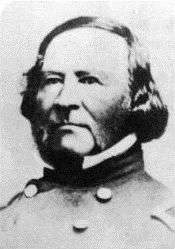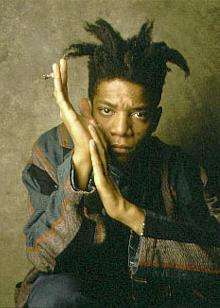Haitian Americans
| ||||||||||||||||||||||||||
| Total population | ||||||||||||||||||||||||||
|---|---|---|---|---|---|---|---|---|---|---|---|---|---|---|---|---|---|---|---|---|---|---|---|---|---|---|
|
(929,074[1][2]  ) ) | ||||||||||||||||||||||||||
| Regions with significant populations | ||||||||||||||||||||||||||
| South Florida metropolitan area, Orlando, New York City, New Jersey, Boston, Chicago, Philadelphia, Washington, D.C. | ||||||||||||||||||||||||||
| Languages | ||||||||||||||||||||||||||
| English, French, Haitian Creole | ||||||||||||||||||||||||||
| Religion | ||||||||||||||||||||||||||
|
Predominantly Roman Catholicism with considerable adherents of Protestantism · Mormonism · Jehovah's Witnesses. | ||||||||||||||||||||||||||
| Related ethnic groups | ||||||||||||||||||||||||||
| Haitians, Haitian Canadians, French Americans, Louisiana Creoles | ||||||||||||||||||||||||||
Haitian Americans (French: haïtien américain; Haitian Creole: ayisyen ameriken) are Americans of Haitian descent. The largest proportion of Haitians in the United States live in the South Florida area and especially the cities of Tampa and Orlando. In addition, they have settled in major East Coast cities such as New York City, Boston, Philadelphia, and Washington, D.C., and in Chicago in the Midwest. Most are immigrants or their descendants from late 20th-century migrations to the United States.
In 2009 the US Census estimated that 830,000 Haitian Americans live in the U.S.[3] During the early 1960s and the 1970s, many Haitians emigrated to the U.S. to escape the oppressive conditions during the dictatorships of François "Papa Doc" and his son Jean-Claude "Baby Doc" Duvalier. Political unrest, economic strains, and natural disasters have supplied additional reasons for people to emigrate.
History
During the 18th century, the French colony of Saint-Domingue was the richest in the Caribbean, due to its massive production of sugar cane. This wealth was concentrated in the hands of a small minority of mostly French and European planters, who used slave labor from Sub-Saharan Africa to cultivate, harvest, and process their crops. Beginning in 1791, slaves (who formed about 90 percent of the population) revolted against their masters, fought against invading forces, and succeeded in forcing France to abolish slavery.
When France attempted later to reintroduce slavery, the former slaves again revolted and won their independence in 1804, declaring the Republic of Haiti, the second republic in the Western Hemisphere. The rebellion proved disruptive to the country's economy, however. Many wealthy colonists left, both white and free people of color. The freedmen wanted to cultivate their own plots rather than work on plantations. Many refugees from Saint-Domingue emigrated to the United States, taking their slaves with them, particularly to the New Orleans region, where they reinforced the existing French-speaking and African populations. Though France and the Spanish-speaking Caribbean (Cuba, Santo Domingo, and Puerto Rico) were other major destinations for many immigrants, the United States was a much more popular destination.
While most of the early 19th-century emigrants from Haiti were from the upper classes, persistent conditions of poverty, as well as political unrest, eventually prodded many lower-class Haitians to emigrate as well. Altogether, there have been four periods of major migration to the United States in the history of Haiti: the initial wave at the turn of the 19th century, following the U.S. occupation in , during the 1960s and 1970s to escape the Duvalier regime, and following the 2004 overthrow of Jean-Bertrand Aristide.
20th century
Between 1957 and 1986, when the Duvaliers ruled Haiti, their political persecution of the opposition and suspected activists resulted in many Haitian professionals, the middle class, and students to emigrate to others countries. Haitians sought political asylum or permanent resident status in many countries such as the United States, Mexico, Puerto Rico, France, Dominican Republic and Canada (primarily Montreal). Between 1977 and 1981, 60,000 Haitians landed in South Florida, many of them settling in the neighborhood of Little Haiti.
In the late 20th century, there was a significant brain drain from Haiti as thousands of doctors, teachers, social workers and entrepreneurs moved to New York City and Miami. Other Haitians worked in restaurants and music stores. In 1986, 40,000 Haitians who came to the United States seeking political asylum achieved permanent resident status. In 1991, there was another wave of Haitian boat people. But the administration of President Bill Clinton tried to discourage Haitian immigration. People were either detained and/or sent back to Haiti. Still, between 1995 and 1998, 50,000 Haitians obtained temporary legal status.[4]
Immigration today
Political strife, marked with corruption, and intimidation led to many Haitians leaving the island for an opportunity of a better life. In addition, most of the migrants were from the poor masses; vast disparities existed between the Haitian wealthy elite and the poor. Suffering from less education, many have had difficulty flourishing in the United States. Waves of Haitians made it to the shores of Florida seeking asylum. Most of the foreign-born Haitians arrived during the 1970s.
Today, Florida has the largest number of people of Haitian heritage. In 2000, Florida had 182,224 foreign-born Haitians, 43.5% of the total foreign-born population from Haiti in the United States (this number did not include U.S. citizens of Haitian heritage). New York had the second-largest population of foreign-born Haitians, with 125,475, approximately 30% of the total. Haitian illegal immigrants continue to attempt to reach the shores of Florida and are routinely swept up by the United States Coast Guard; they are often repatriated. Civil rights groups have protested this treatment, remarking on the contrast to the asylum granted in the late 1950s to Cuban refugees.
Culture
Language and religion
Most recent Haitian immigrants speak Haitian Creole and are either familiar with, or learn English. In Haiti, although French is an official language that is widely spoken and understood, most Haitians speak Creole in daily life. (More than 90% of its vocabulary is of French origin, with some influences from Taíno, West African, Portuguese, and Spanish languages.) Most native-born Haitian Americans speak English fluently, as do many immigrants.
Most Haitian Americans, like their counterparts in Haiti, are Roman Catholics. Some smaller Protestant and Mormon communities of Haitian Americans also exist, as does a population of Jehovah's Witnesses. Some individuals practice Vodoun, either in combination with Christianity or separately. Religion is very important in the life of Haitian Americans.[4]
Adjustment and communities
The Haitians who emigrated to the United States brought many of their cultural practices and ideologies, as do all immigrants. Many foreign-born Haitians have set up their own businesses, initially to serve their communities. Thus, many established barbershops, bodegas, and restaurants (predominately of Haitian cuisine).
Haitian Americans have a visible cultural presence in Little Haiti, Miami, and several nearby communities, such as Golden Glades and North Miami. Other significant Haitian-American communities are found in several neighborhoods of New York City, such as Harlem, Flatbush (Nostrand), East Flatbush, Queens Village, Springfield Gardens, Laurelton, Park Slope, Crown Heights, Prospect Heights, Cambria Heights, Rosedale and Canarsie, Brooklyn of Brooklyn and Elmont, Long Island.
The Mattapan section of Boston is considered the main center of Haitians in the city. Growing Haitian communities have also formed in smaller cities in the Northeast, especially Providence, Rhode Island. In such centers, everyday conversations on the street may take place in Haitian Creole. Second-generation Haitian Americans have begun to gain higher-paying occupations, and achieve higher levels of education. Several Haitian Americans have become professional athletes, mostly in the National Football League.
Significant Haitian populations are located in the US territories of Puerto Rico and the US Virgin Islands.[5] In Puerto Rico, Haitians receive refugee asylum, similar to the Wet feet, dry feet policy for Cubans going to Florida.[6][7]
Youth
Since the 1980s, a new generation of young Haitian immigrants have entered the nation’s schools. They have been the fastest growing and most ethnically diverse segment of America’s child population.[8] These Haitian (American) youth are very diverse in the ways that they identify with Haiti and participate within their different communities.[9]
These youth vary between those born in the US of immigrant parents, those who immigrated with their families as small children, those who immigrated recently under duress (such as after the 2010 earthquake), and those who have come to attend colleges and universities. Many scholars refer to these Haitian youth as the “new second generation.”[10] They say that identity formation among Haitian youth is based on many different factors, including first-generation modes of adaption, parental socio-economic status, length and place of residency, certain social constructions of a pluralistic American society (such as racism), as well as others.[11]
Education is a significant factor in the lives of Haitian American youth, particularly among those who aspire towards certain professions such as medicine and law.[12] Many Haitian youth who immigrate have been trained in top Haitian middle schools, high schools, and colleges that prepare them for such pursuits. Because of this, many Haitian youth come to the United States in order to enter college. (See Harvard University’s Haitian Student Association for an example of a strong group of Haitian American and Haitian students). In other cases, parents who do not have access to high-quality schools in Haiti may move to the United States to offer their children better opportunities.[13]
Haitian-American youth express themselves creatively in different ways. For many immigrants, creative expression allows a certain connection to Haiti that keeps them bound to their roots, and allows them to maintain a sense of pride for that country while abroad. They may speak French and Haitian Creole in friend circles and in places such as home and church. Cooking traditional Haitian food, following Haitian music and musicians, and participating in Haitian styles of dance are other ways to keep connected with their roots. These aspects of creative expression allow Haitian youth to maintain a strong tie to their Haitian communities that, while informed by an American experience, also adds elements and nuances to American culture.
Demographics
US states with largest Haitian populations
According to the 2010 US Census, there were 881,488 Haitian Americans.[14]
The 10 U.S. states with the largest Haitian populations are:
- Florida - 424,101
- New York - 190,718
- Massachusetts - 73,201
- New Jersey - 49,340
- Pennsylvania - 21,178
- Georgia - 20,782
- Connecticut - 18,628
- Maryland - 12,148
- Illinois - 7,409
- California - 6,766
US metropolitan areas with largest Haitian populations
The largest populations of Haitians are situated in the following metropolitan areas (Source: Census 2010):[14]
- Miami-Fort Lauderdale-Pompano Beach, FL MSA - 308,605
- New York-Northern New Jersey-Long Island, NY-NJ-PA-CT MSA - 222,193
- Boston-Cambridge-Quincy, MA-NH MSA - 65,658
- Orlando-Kissimmee-Sanford, FL MSA - 36,443
- Philadelphia-Camden-Wilmington, PA-NJ-DE-MD MSA - 17,884
- Atlanta-Sandy Springs-Marietta, GA MSA - 17,693
- Bridgeport-Stamford-Norwalk, CT MSA - 12,094
- Tampa-St. Petersburg-Clearwater, FL MSA - 11,554
- Washington-Arlington-Alexandria, DC-VA-MD-WV MSA - 10,187
- Jacksonville, FL MSA - 7,767
High percentages of Haitian ancestry by community
The 36 U.S. communities with the highest percentage of people claiming Haitian ancestry are:[15]
| % | Community | State |
|---|---|---|
| 33.5% | Golden Glades | Florida |
| 33.0% | North Miami | Florida |
| 23.0% | El Portal | Florida |
| 23.0% | Spring Valley | New York |
| 19.9% | North Miami Beach | Florida |
| 15.7% | Lauderdale Lakes | Florida |
| 14.5% | Lake Park | Florida |
| 13.9% | Ives Estates | Florida |
| 13.8% | Immokalee | Florida |
| 12.1% | Pine Hills | Florida |
| 11.5% | Belle Glade | Florida |
| 11.4% | Orange | New Jersey |
| 11.3% | New Cassel | New York |
| 11.1% | Irvington | New Jersey |
| 10.8% | North Valley Stream | New York |
| 10.7% | Elmont | New York |
| 10.5% | Delray Beach | Florida |
| 9.2% | Biscayne Park | Florida |
| 9.2% | Mangonia Park | Florida |
| 9.1% | Lauderhill | Florida |
| 8.5% | Uniondale | New York |
| 8.3% | Miami Shores | Florida |
| 8.1% | Lake Worth | Florida |
| 8.0% | Roselle | New Jersey |
| 7.8% | Nyack | New York |
| 7.6% | South Nyack | New York |
| 7.0% | Ramapo | New York |
| 7.0% | Oakland Park | Florida |
| 6.9% | Fort Lauderdale | Florida |
| 6.7% | Florida City | Florida |
| 6.7% | North Lauderdale | Florida |
| 6.7% | Wilton Manors | Florida |
| 6.5% | Boynton Beach | Florida |
| 6.4% | Asbury Park | New Jersey |
| 6.4% | Fort Pierce | Florida |
| 6.2% | Randolph | Massachusetts |
| 6.0% | Miramar | Florida |
See also
- List of Haitian Americans
- Haiti–United States relations
- Haitian diaspora
- Haitian people
- French Caribbean
- West Indian Americans
- Dominican Americans
References
- 1 2 Data Access and Dissemination Systems (DADS). "American FactFinder - Results". census.gov.
- ↑ "Total ancestry categories tallied for people with one or more ancestry categories reported 2010 American Community Survey 1-Year Estimates". United States Census Bureau. Retrieved 30 November 2012.
- ↑
- 1 2 Felix Eme Unaeze and Richard E. Perrin. "A Countries and Their Cultures: Haitian Americans". Countries and their cultures. Retrieved December 26, 2011.
- ↑ "'Third Border' Crisis: Number Of Haitian Migrants Heading To Puerto Rico Jumps - Fox News Latino". Rapadoo Observateur.
- ↑ "The Other Border: Puerto Rico's Seas - Latino USA". Latino USA.
- ↑ "Desperate Crossings". google.com.
- ↑ Butterfield, Sherri-Ann P.. “‘We’re Just Black’: The Racial and ethnic identities of second generation West Indians in New York.” In Becoming New Yorkers: Ethnographies of the New Second Generation, edited by Kasinitz, Philip, John H. Mollenkopf, and Mary C. Waters, 288-312. New York: Russell Sage, 2004.
- ↑ Zéphir, Flore. Trends in Ethnic Identification among Second-generation Haitian Immigrants in New York City. Westport, CT: Bergin & Garvey, 2001.
- ↑ Zhou, Min. "Growing up American: The Challenge Confronting Immigrant Children and Children of Immigrants." Annual Review of Sociology (1997): 63-95.
- ↑ Kasinitz, Philip, John H. Mollenkopf, and Mary C. Waters. Becoming New Yorkers: Ethnographies of the New Second Generation. New York: Russell Sage, 2004. Also see: Waters, Mary C. "Ethnic and Racial Identities of Second-Generation Black Immigrants in New York City." International Migration Review (1994): 795-820. Also see: Waters, Mary C.. “The Intersection of Gender, Race, and Ethnicity in Identity Development of Caribbean American Teens.” In Urban Girls: Resisting Stereotypes, Creating Identities, edited by Leadbeater, Bonnie J. Ross, and Niobe Way, 65-84. New York: New York UP, 1996.
- ↑ Schmid, Carol L. "Educational Achievement, Language-Minority Students, and the New Second Generation." Sociology of Education (2001): 71-87.
- ↑ Desir, Charlene. “Lot Bo Dlo: Across Waters.” PhD diss., Harvard University, 2006.
- 1 2 Data Access and Dissemination Systems (DADS). "American FactFinder - Results". census.gov.
- ↑ "Ancestry Map of Haitian Communities". Epodunk.com. Retrieved 2008-08-04.



_(LOC)_(5436422514)_(cropped).jpg)








.jpg)
.jpg)






